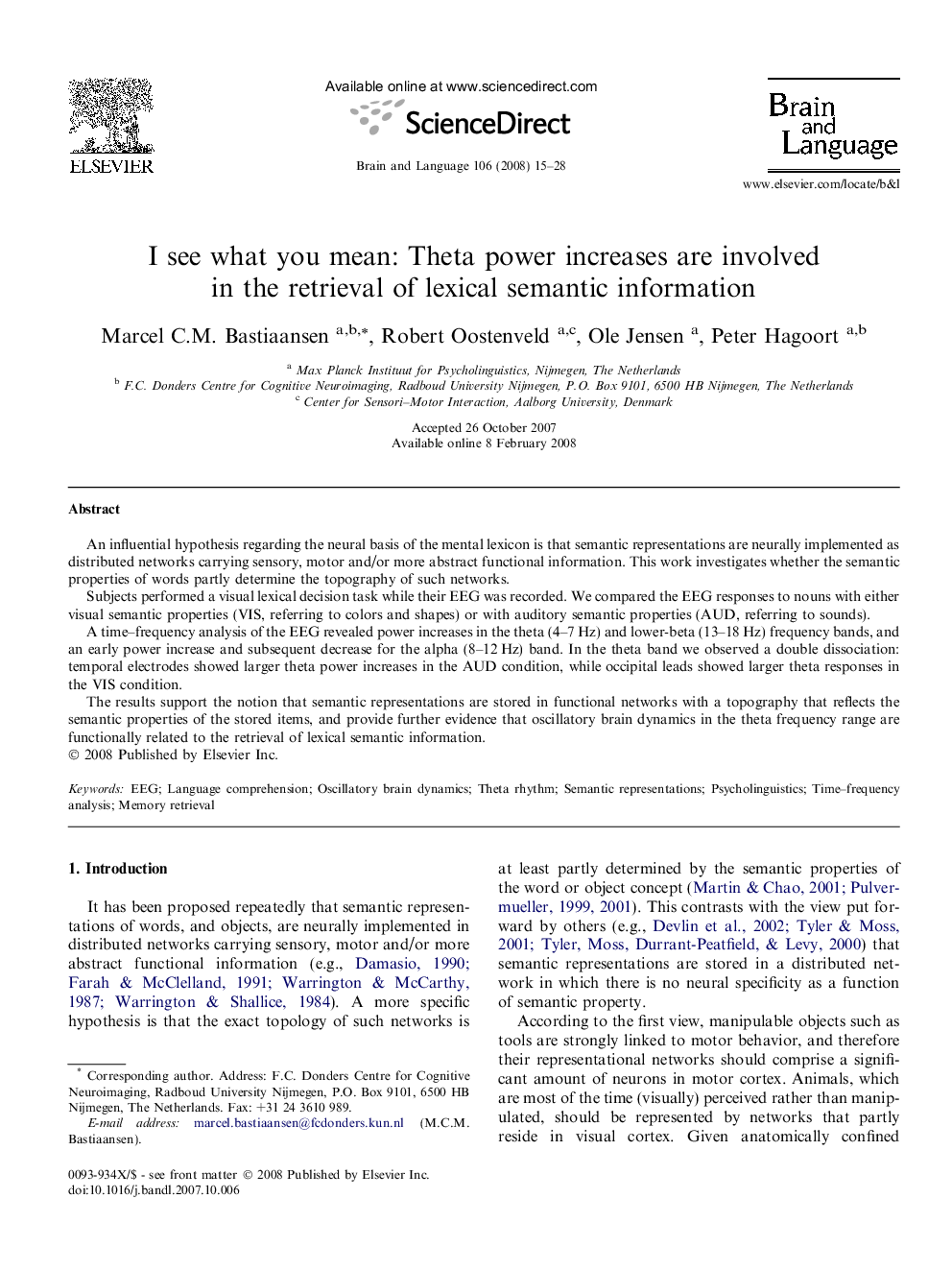| Article ID | Journal | Published Year | Pages | File Type |
|---|---|---|---|---|
| 925691 | Brain and Language | 2008 | 14 Pages |
An influential hypothesis regarding the neural basis of the mental lexicon is that semantic representations are neurally implemented as distributed networks carrying sensory, motor and/or more abstract functional information. This work investigates whether the semantic properties of words partly determine the topography of such networks.Subjects performed a visual lexical decision task while their EEG was recorded. We compared the EEG responses to nouns with either visual semantic properties (VIS, referring to colors and shapes) or with auditory semantic properties (AUD, referring to sounds).A time–frequency analysis of the EEG revealed power increases in the theta (4–7 Hz) and lower-beta (13–18 Hz) frequency bands, and an early power increase and subsequent decrease for the alpha (8–12 Hz) band. In the theta band we observed a double dissociation: temporal electrodes showed larger theta power increases in the AUD condition, while occipital leads showed larger theta responses in the VIS condition.The results support the notion that semantic representations are stored in functional networks with a topography that reflects the semantic properties of the stored items, and provide further evidence that oscillatory brain dynamics in the theta frequency range are functionally related to the retrieval of lexical semantic information.
